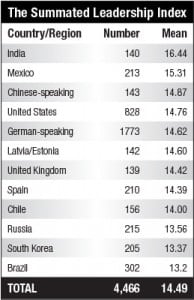![Howie sholkin 9.12.13[3]](https://www.prnewsonline.com//wp-content/uploads/2013/11/Howie-sholkin-9.12.133-200x300.jpg) An online survey of public relations professionals uncovered insights—both encouraging and worrisome—related to the responsibilities and leadership in the communications profession. Practitioners in 23 countries participated in the 2011 and 2012 survey conducted by the Plank Center for Leadership in Public Relations at the University of Alabama. (The research [http://bit.ly/1eMBmMB] was presented last month at the PRSA’s annual meeting in Philadelphia.) Gender and generational differences as well as the leadership findings jumped out at me.
An online survey of public relations professionals uncovered insights—both encouraging and worrisome—related to the responsibilities and leadership in the communications profession. Practitioners in 23 countries participated in the 2011 and 2012 survey conducted by the Plank Center for Leadership in Public Relations at the University of Alabama. (The research [http://bit.ly/1eMBmMB] was presented last month at the PRSA’s annual meeting in Philadelphia.) Gender and generational differences as well as the leadership findings jumped out at me.
The scorecard below is a useful tool for gauging the opportunity for enhancing global communications. A perfect mean score is 21 but the average mean score fell well short at 14.49.
What is of particular concern for the future of the PR profession is that younger, lower-level pros found even more need for leadership improvement. With a scale between 1=very little extent, and 7=great extent, all three of the Index elements fell flat.
Leadership had a far different view than their colleagues. Leaders felt they were doing a much better job with their performance, at 5.32, two-way, at 5.05, and CEO’s view of PR the highest, at 5.41.
In addition to the overall disconnect between the top and bottom rungs of the organization, how can a profession built on communication show so poorly on two-way communication? Talk about a need for improvement.
Close behind are the mediocre scores for executive performance and CEO support. It will not matter how well we perform as practitioners if our colleagues are not inspired and business leaders question PR’s value.
THE GENDER SPLIT
Gender played prominent roles in the responses. Generally, women were younger and less experienced than men. It was almost a 50-50 split in responses from males and females.
They generally agreed on “soft” skills: improve listening skills, enhance emotional intelligence and conflict management skills, increase cultural understanding/sensitivity, strengthen change management skills and improve skills to manage stress. But that is where the similarities ended.
Women rated significantly higher than men in emotional IQ, conflict management, listening and stress management. Women are a much larger part of the PR profession than years ago, yet the survey shows they do not share the same leadership ambition.
Men considered themselves to be leaders much more often than women. Do these findings represent a mindset or a glass ceiling for women?
Generational differences are no less significant than gender ones. When compared to older workers, Millennials (born after 1980), rated significantly higher the importance of improving professional image; the need to improve PR measurement; the value of education and the future of the profession.
The baby boomers (born between 1946 and 1964) placed greater emphasis on listening skills and cultural understanding, two-way communication, performance of the communication leader and how much a CEO values PR.
DIGITAL RULES
Regardless of the industry sector of the participants (nonprofit (24%), agency (23%, and public companies and private/state-run companies (20%), there is agreement on the four most important issues facing PR today, three related to the impact of digital media:
• Dealing with the speed and volume of information flow (23%).
• Managing the digital revolution and rise of social media (15%).
• Improving the measurement of communication effectiveness (12%)
• Being prepared to effectively deal with crises that may arise (12%).
PR pros skilled in understanding audiences beyond reporters, producing and distributing multimedia content for those audiences, leading experimentation across an organization and applying analytics to programs, will be well positioned to gain executive confidence and support. PRN
CONTACT:
Howard Sholkin is director, communications and marketing programs at IDG Global Solutions. Follow him on Twitter: @hsholkin.
This article appeared in the November 25 issue of PR News. Subscribe to PR News today to receive weekly comprehensive coverage of the most fundamental PR topics from visual storytelling to crisis management to media training.

